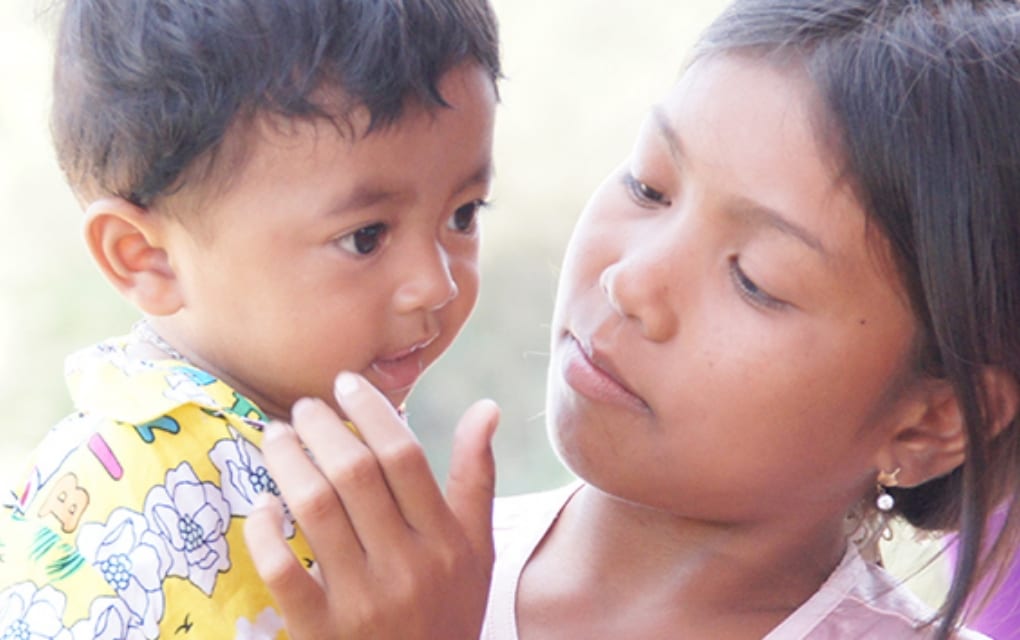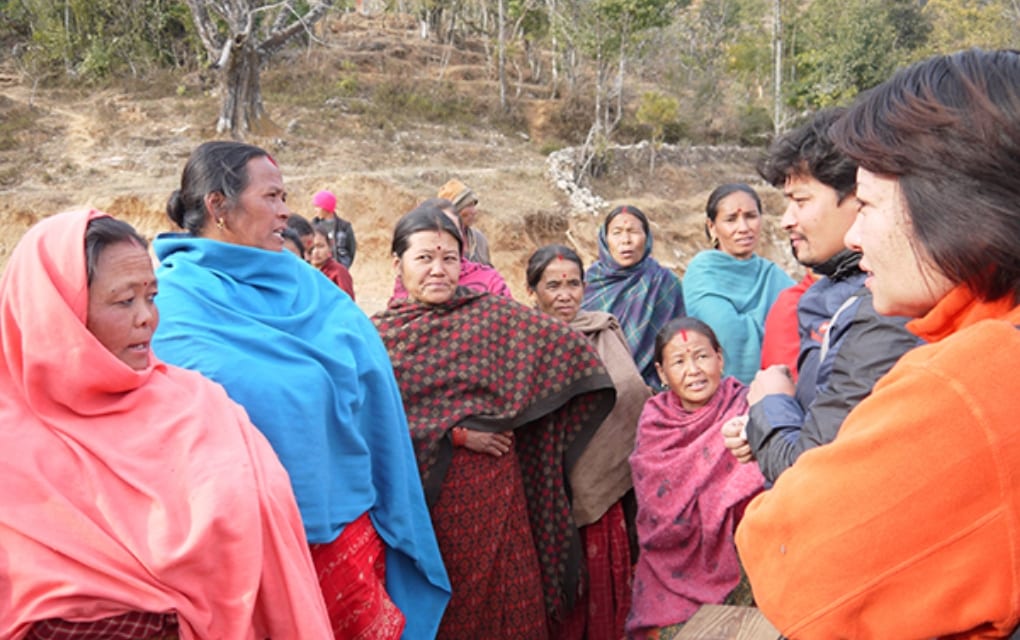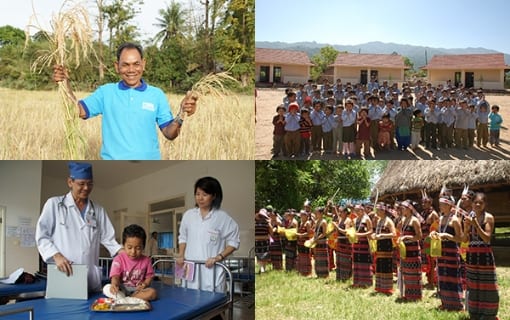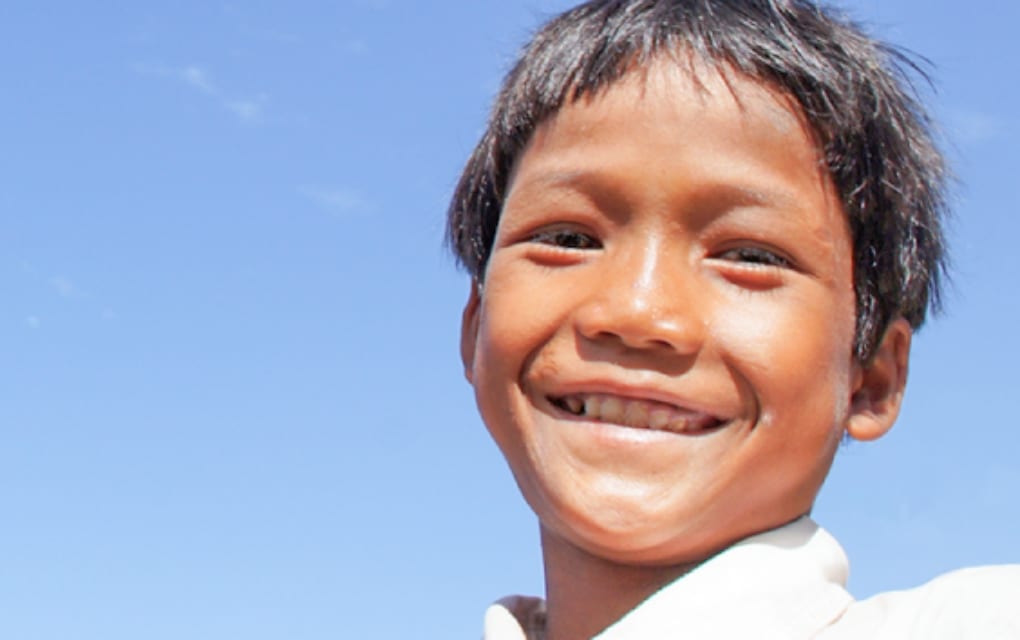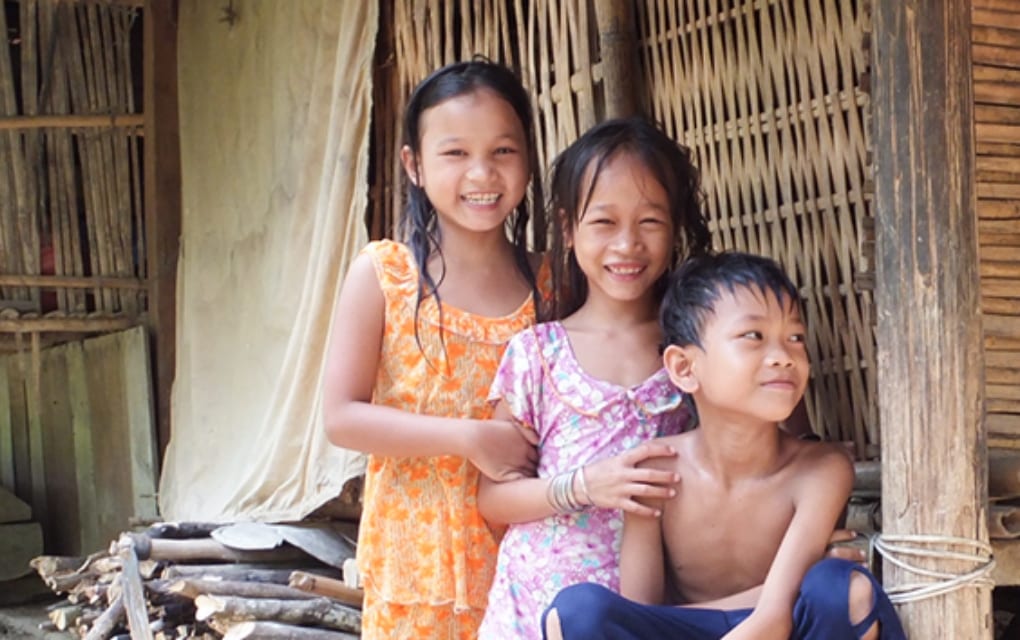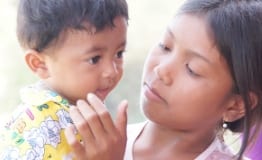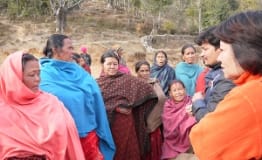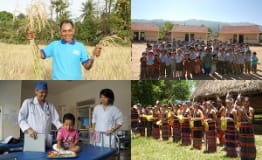Reducing Food Waste: How FIDR Cambodia Turned Food Scraps into Compost
Although the Nutrition Education and Promotion Project (NEPP) mainly focuses on nutrition education, our team has also been deeply concerned about the growing issue of waste in the country. We have been actively encouraging waste separation and plastic recycling among the teachers and students at our target schools. However, we recently realized that we were not applying the same practices in our own office.
After doing more research, we realized that food waste is an issue that cannot be ignored. According to the United Nations Development Programme (UNDP), over 50% of waste in Cambodia is food waste. We felt even worse when we learned that a huge amount of food wastes is being dumped into landfills.
Tackling food waste nationwide is not easy. While brainstorming possible solutions, one team member suggested, “Why don’t we start with ourselves? Let’s try composting food waste in our office!”. Everyone immediately agreed, recognizing it as an effective first step to help us better support others in reducing food waste.
However, we had neither materials nor the knowledge to start composting. In April 2025, we connected with a social enterprise called “Leng Dei” (which translates to “Play the Soil” in English). They provided a fun and practical training session on home composting, where we learned many useful tips. We also purchased their compost kits to get started.
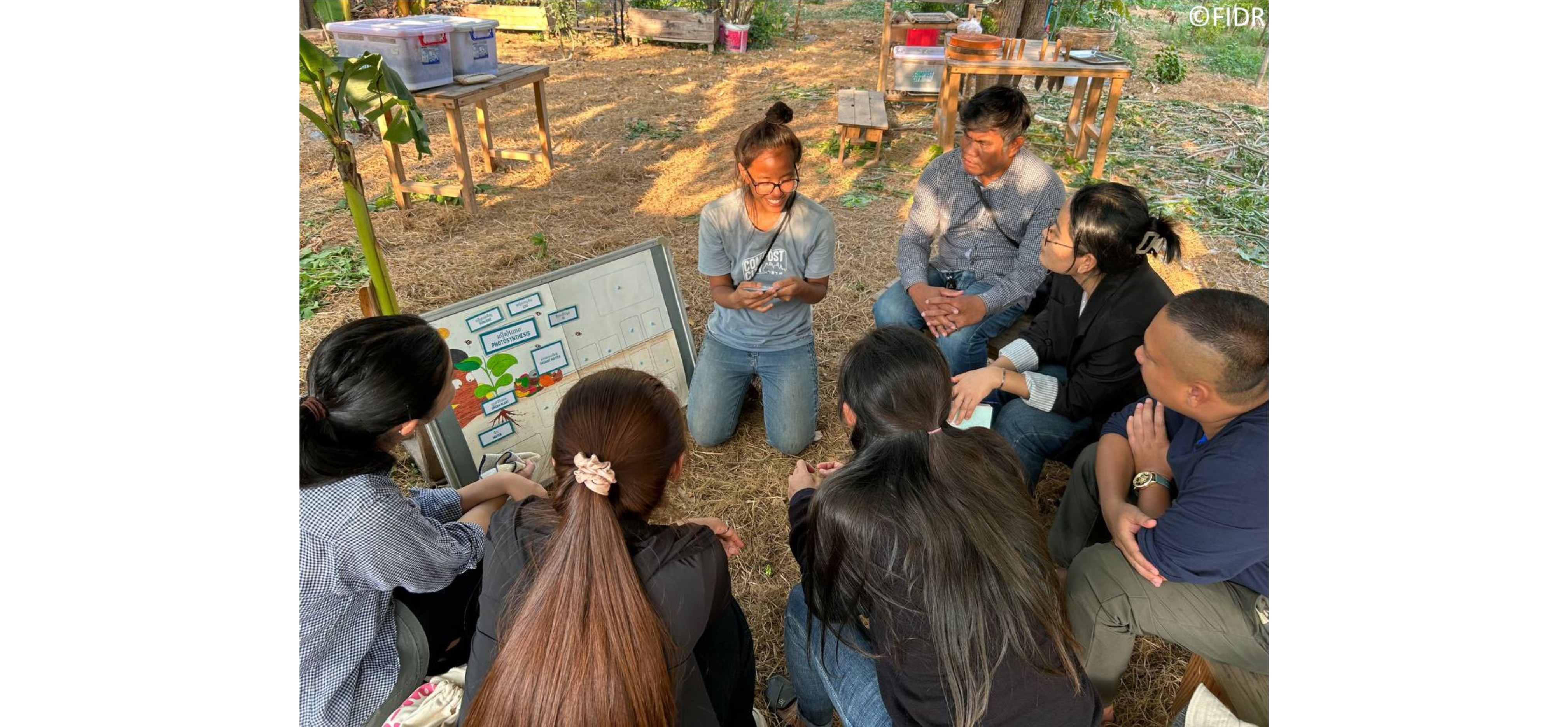
Training on home composting provided by “Leng Dei”
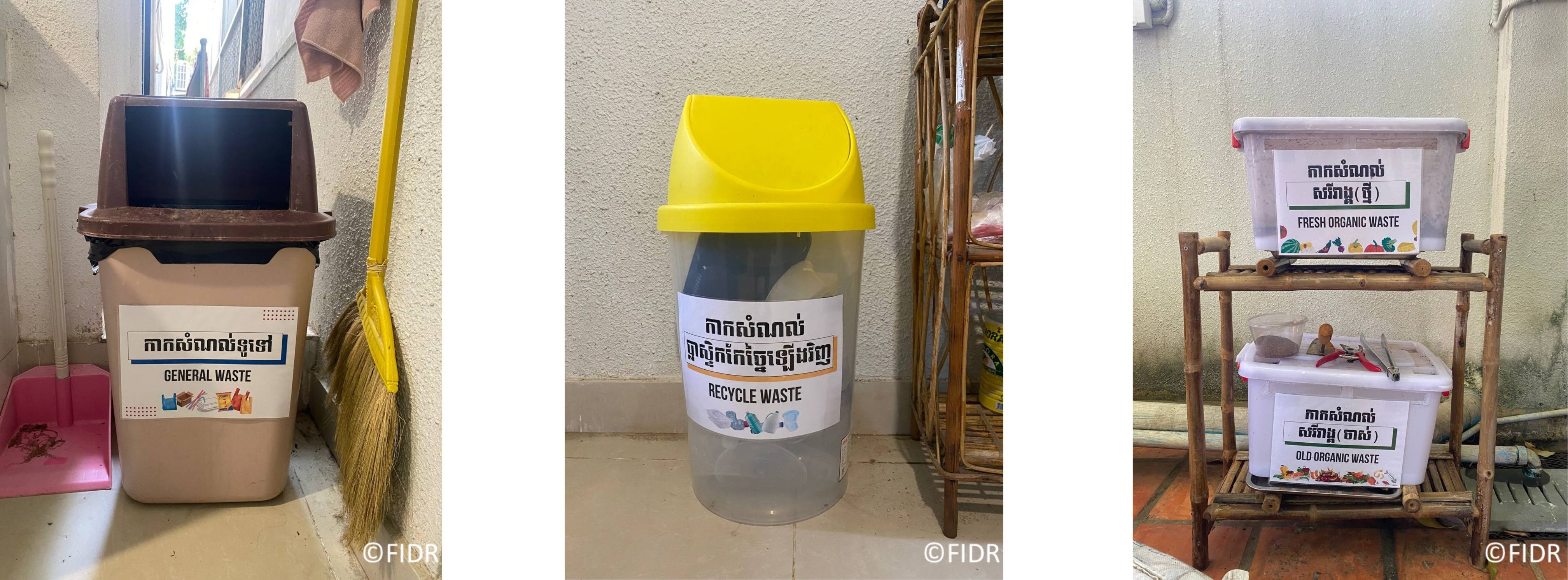
Trash bins label (general, recyclable and organic waste)
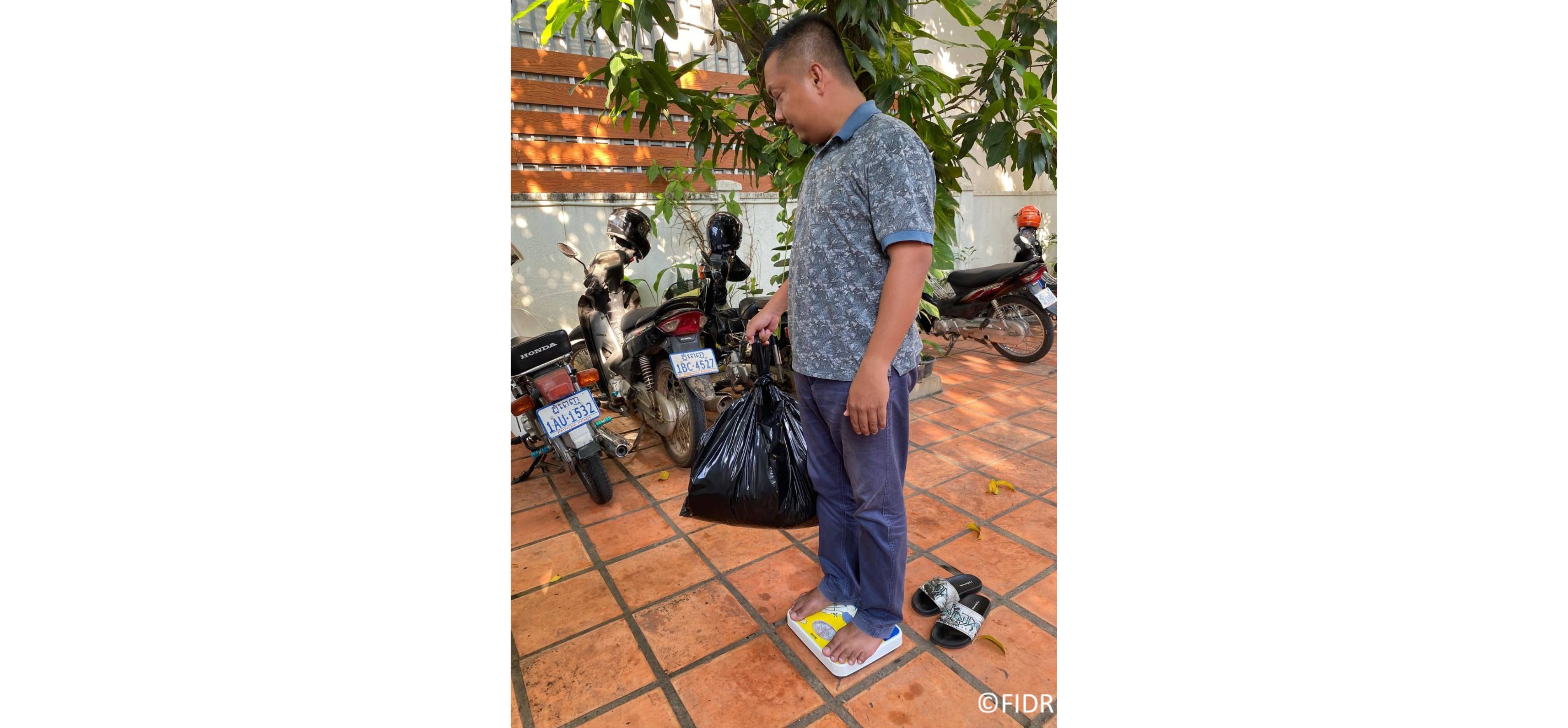
Measuring mixed waste amount
After lunchtime, we collected and weighed food scraps before putting them into the composting box. After a month, we found the food scraps started to smell unpleasant, and we found organisms like worms, larvae, and even mushrooms growing inside. We wondered why Leng Dei’s compost didn’t smell this bad. We tried adding more carbon materials to reduce the odor, but it didn’t help at all. After referring back to their guidelines, we learned that the smell was caused by meat and bones.
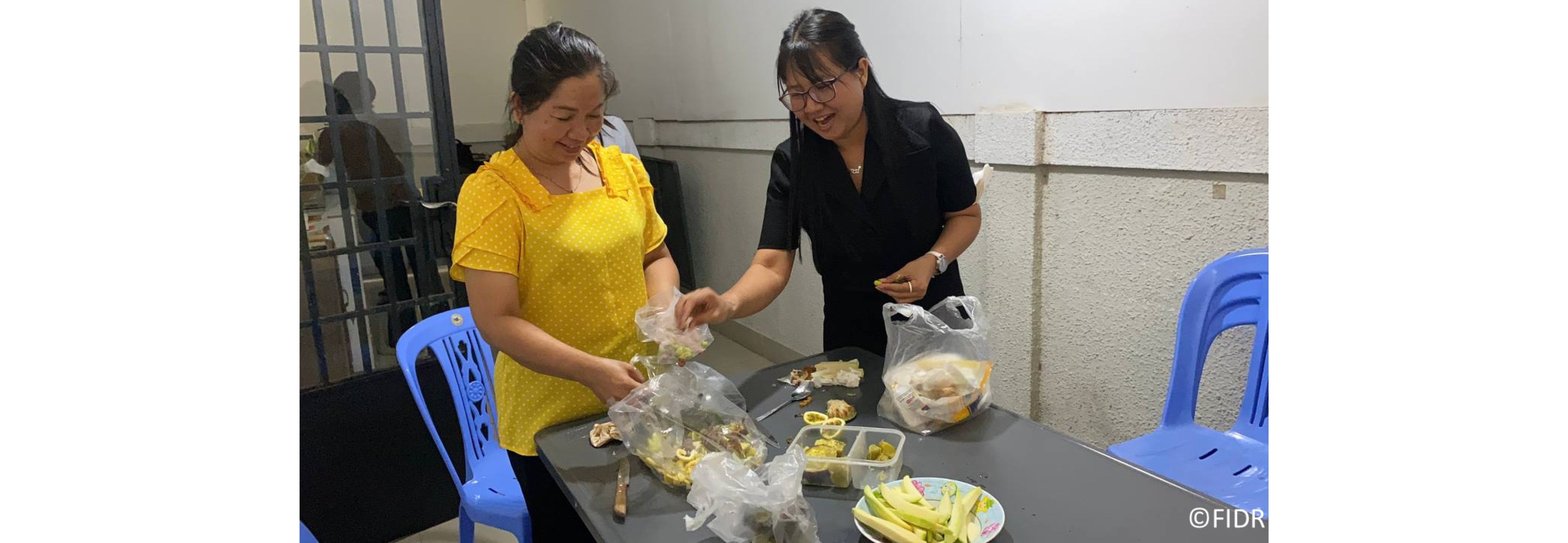
The staff collect food scraps after lunch
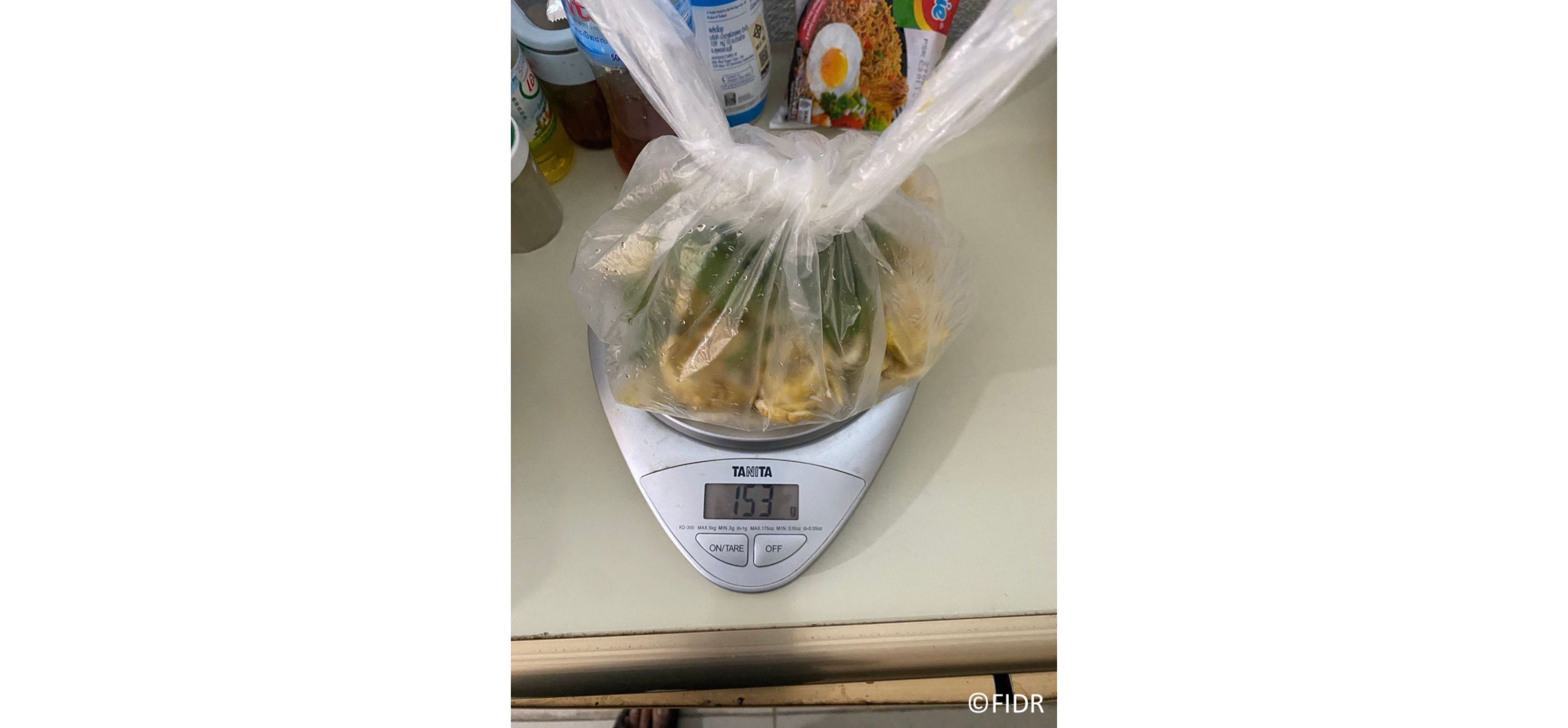
Measuring food scraps before putting them into the compost bin
We then decided to compost only leftover vegetables and replaced the carbon mixture with shredded office paper, which is also rich in carbon. We turned the organic matter every two weeks. After about two to three months, the materials gradually decomposed — their color changed from fresh to brown, then black, and the bad smell disappeared.
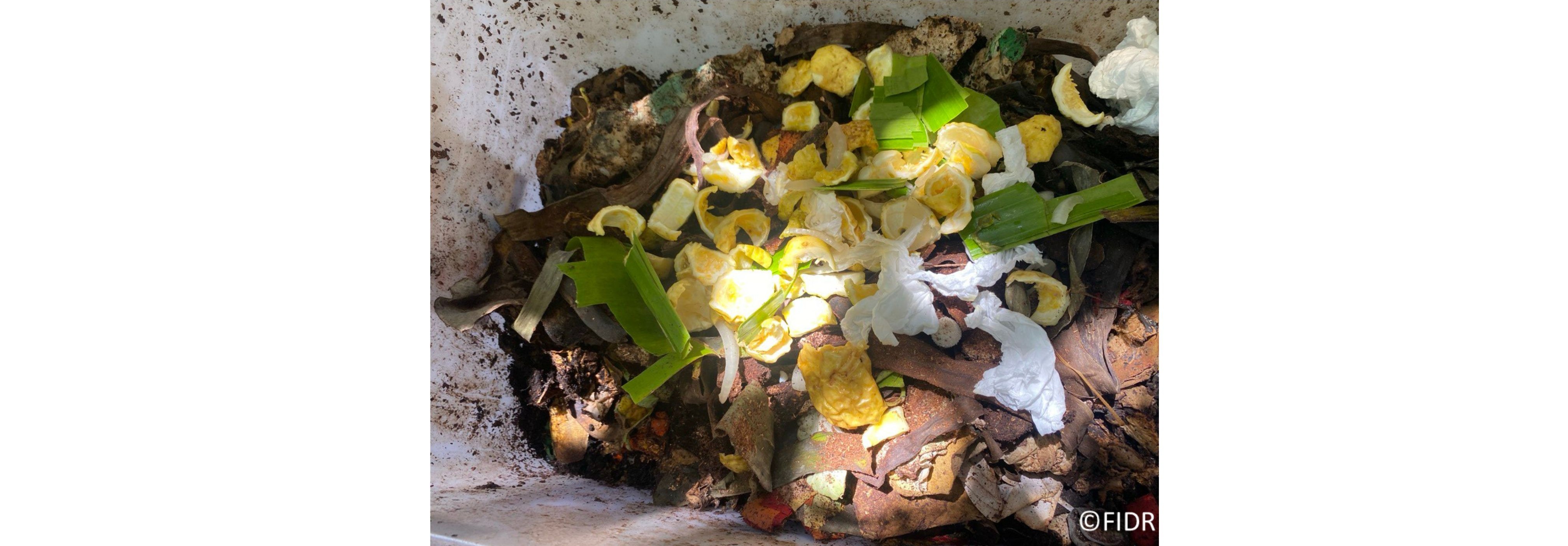
Fresh compost materials
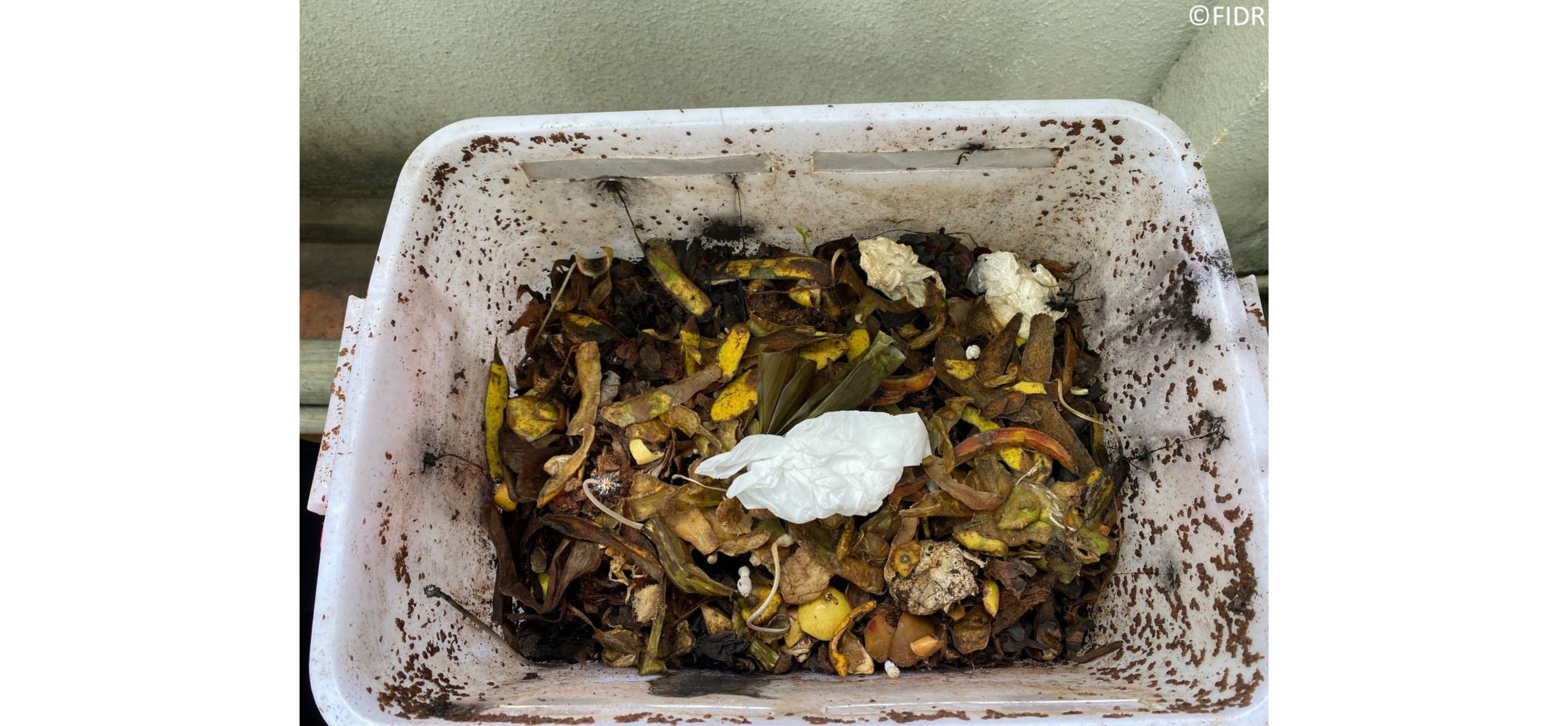
Gradually turning to brown color
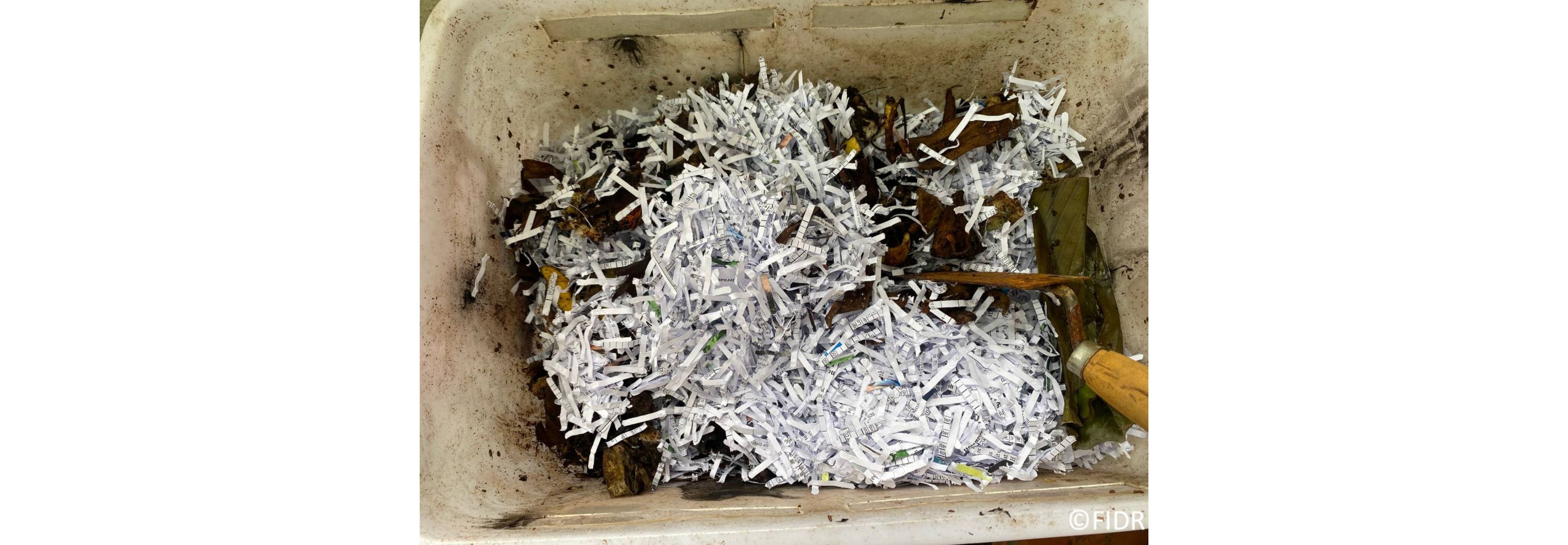
Using shredded papers to reduce the odor
After four months of consistent effort, in August 2025, we finally produced 2.2kg of ready compost. A team member excitedly asked, “Can I take some for my flowers at home?”. “Definitely!” everyone agreed. Besides taking some fertilizer home for personal use, we also applied it to the plants in our office.
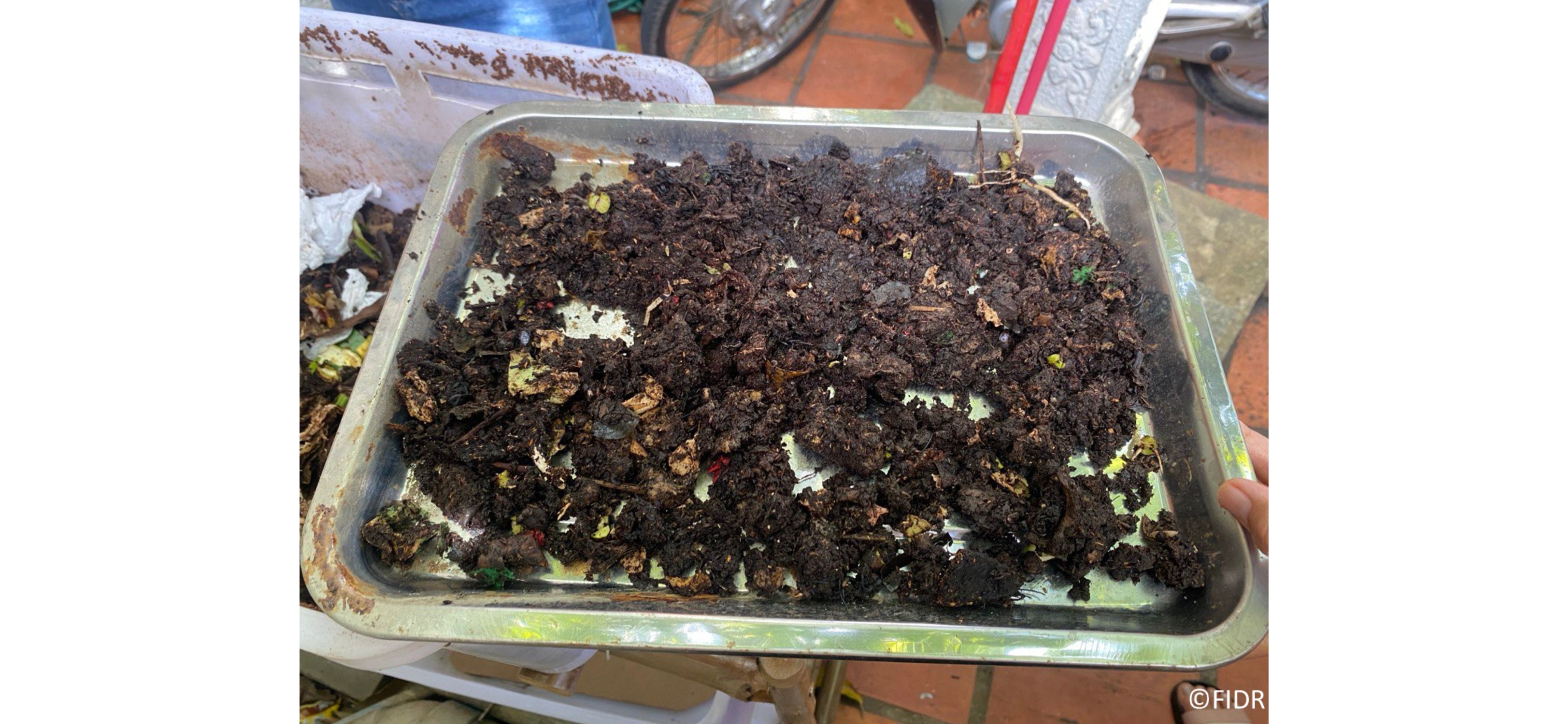
The ready compost
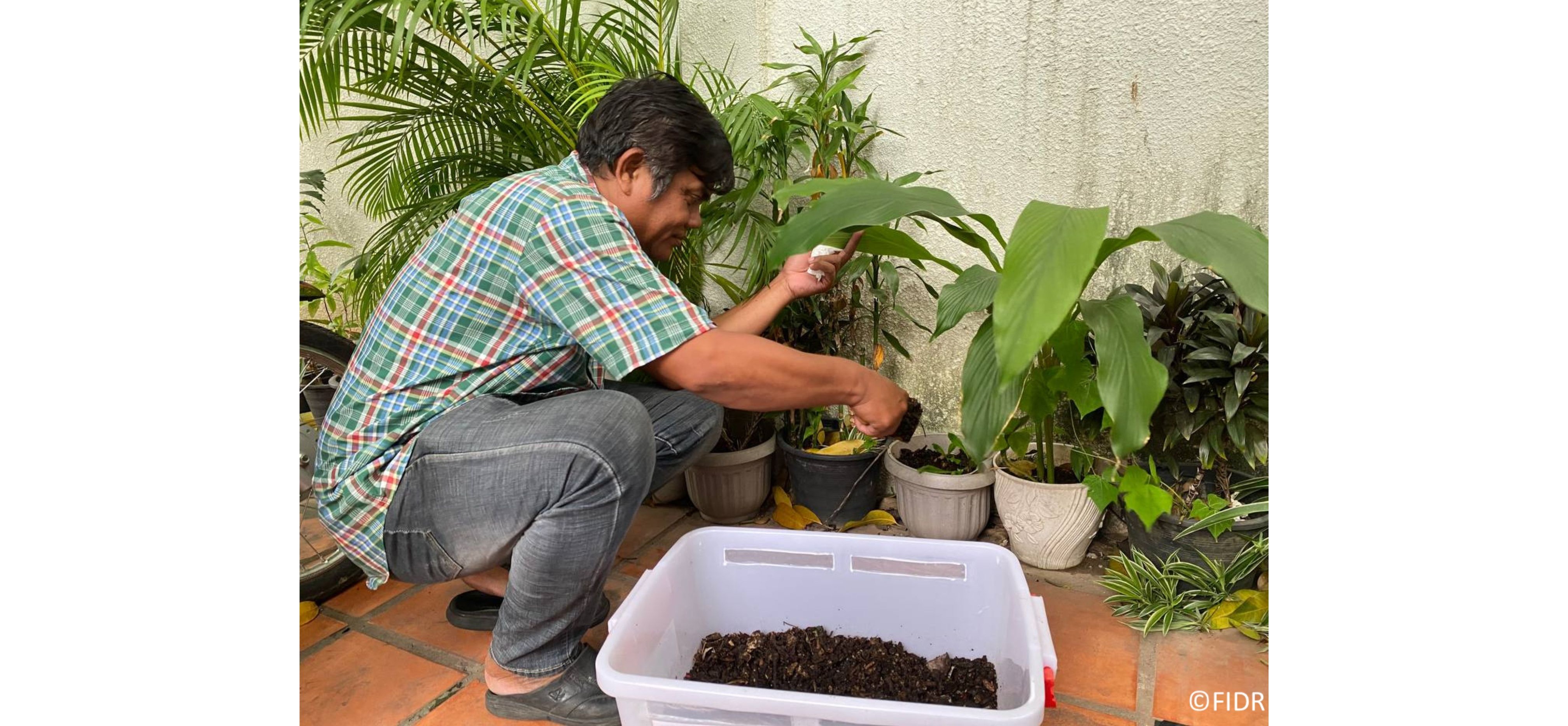
Applying fertilizer to office plants
“I used to think composting required a large space and advanced skills, but after Leng Dei’s training, I realized I could easily do it right in my office. At first, the strong smell and worms made me hesitate to open the compost bin, but I recalled the trainer saying they’re part of the compost family. After that, I actually started to enjoy checking on this ‘family’ every two weeks when flipping the compost. Moreover, taking photos and videos throughout the process was fun, and it reminded me that good things take time and patience. Seeing our compost succeed truly motivated me — it showed that I can make a small yet meaningful contribution to reducing food waste in Cambodia.”— A member of NEPP
This experience taught us that big journeys begin with small steps. By starting within our own office, we gained valuable insights into how to reduce food waste in Cambodia, and we’re confident that our journey can inspire others. One day, we hope to proudly share with our stakeholders, “This is how we manage food waste through composting in our office.”
Other staff blogs
Back to List
DONATION
Your generous donation now will have impacts
on children and communities in our fields.

